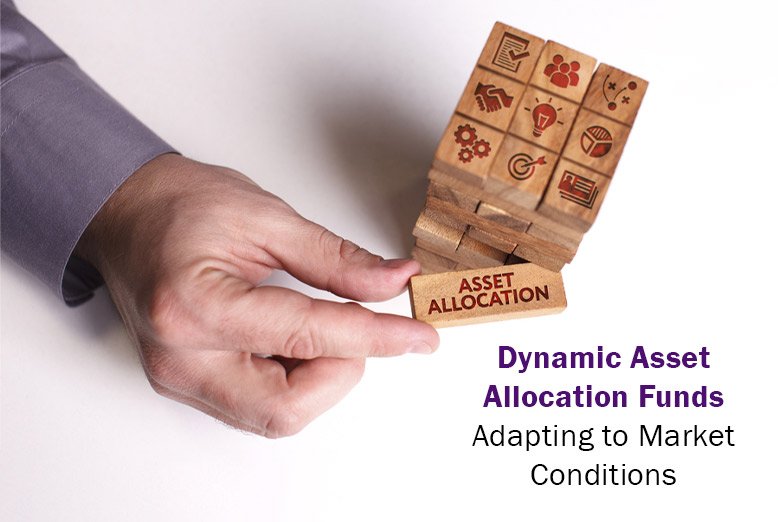Dynamic asset allocation funds are a key tool for investors seeking to manage their portfolios more actively in response to ever-changing market conditions. Unlike traditional funds, which maintain a fixed allocation between asset classes, dynamic funds adjust their portfolio composition based on market signals and economic indicators. This flexibility allows dynamic asset allocation funds to optimize risk and return, making them an attractive option for investors who need their portfolios to be more responsive to economic shifts, market volatility, and geopolitical events.
Understanding Asset Allocation Funds
Asset allocation is the practice of spreading investments across various asset classes—such as stocks, bonds, real estate, and commodities—to reduce risk. The idea is that different asset classes behave differently under varying economic conditions, so a diversified portfolio can help manage risk and improve long-term returns. Traditional asset allocation funds often have fixed allocations, meaning they stick to predetermined percentages for each asset class regardless of market conditions.
Mutual funds are a common vehicle for asset allocation strategies, offering a diversified mix of assets within a single investment. These funds pool money from multiple investors and allocate it across various securities, making them a convenient way for individual investors to access a well-diversified portfolio. However, unlike dynamic asset allocation funds, many mutual funds have fixed or strategic allocation plans that do not change in response to market conditions.
Dynamic asset allocation, however, takes this a step further. It actively adjusts the portfolio composition in response to changes in the market environment. Unlike strategic asset allocation, which adheres to a long-term plan, or tactical asset allocation, which makes periodic adjustments, dynamic asset allocation funds are continuously monitored and modified. This approach aims to take advantage of favourable market trends while minimizing exposure to downside risks.
The Mechanics of Dynamic Asset Allocation
Dynamic asset allocation funds operate on the premise that economic conditions directly influence the performance of different asset classes. Fund managers use a combination of market analysis, economic data, and technical indicators to determine when to adjust the portfolio. The goal is to remain nimble and responsive to changes in market conditions, thereby capitalizing on trends and minimizing exposure to downturns.
In practice, this means that the portfolio composition of a dynamic asset allocation fund will change as the economic landscape evolves. For example, if the economy is experiencing growth, the fund may increase its exposure to equities, which tend to perform well in such conditions. Conversely, if a recession is looming, the fund may shift toward more defensive assets, such as bonds or cash equivalents, to preserve capital.
To make these adjustments, dynamic asset allocation funds rely on a variety of investment strategies. Economic indicators such as GDP growth, inflation rates, and unemployment figures can signal when to increase or reduce exposure to specific sectors or asset classes.
Benefits of Dynamic Asset Allocation Funds
One of the most significant advantages of dynamic asset allocation funds is their flexibility. They can be adjusted quickly and strategically, making them well-suited to volatile and uncertain markets. This adaptability means that the portfolio can be optimized for changing economic environments, whether the market is in an expansionary phase or facing a downturn.
Another key benefit is the potential for maximizing returns. Dynamic asset allocation allows fund managers to seize opportunities in different asset classes, taking advantage of market inefficiencies. For instance, during periods of economic growth, a fund may increase its equity exposure to benefit from rising stock prices. On the other hand, during a market correction, the fund may reduce its equity holdings and shift toward safer assets, protecting the portfolio from losses.
Dynamic asset allocation funds also offer downside protection, particularly in bearish markets. When economic indicators suggest a downturn, these funds can reduce their exposure to riskier assets, such as equities, and allocate more towards bonds or other defensive investments. This approach can help minimize the impact of market declines, providing a more stable return profile during turbulent times.
Risks and Challenges of Dynamic Asset Allocation
While dynamic asset allocation funds offer many benefits, they are not without risks. One of the main challenges is the potential for overactive management. The frequent adjustments that characterize dynamic asset allocation can sometimes lead to excessive trading, which not only increases transaction costs but also can harm the fund’s long-term performance. A fund manager’s ability to time the market correctly is crucial, and frequent adjustments based on short-term market movements can sometimes result in poor investment decisions.
Lastly, investors need to understand their risk tolerance before investing in dynamic asset allocation funds. These funds are designed for investors who are comfortable with active management and the potential for short-term volatility. For more conservative investors, the frequent adjustments may feel unsettling, and the strategy might not align with their long-term financial goals.
Conclusion
Dynamic asset allocation funds offer a flexible and adaptive investment strategy that allows investors to respond to ever-changing market conditions. By adjusting the portfolio in real-time based on economic signals and market trends, these funds provide an opportunity to potentially maximize returns while minimizing risk in volatile environments. However, they are not without challenges, including the potential for overactive management and higher fees.















